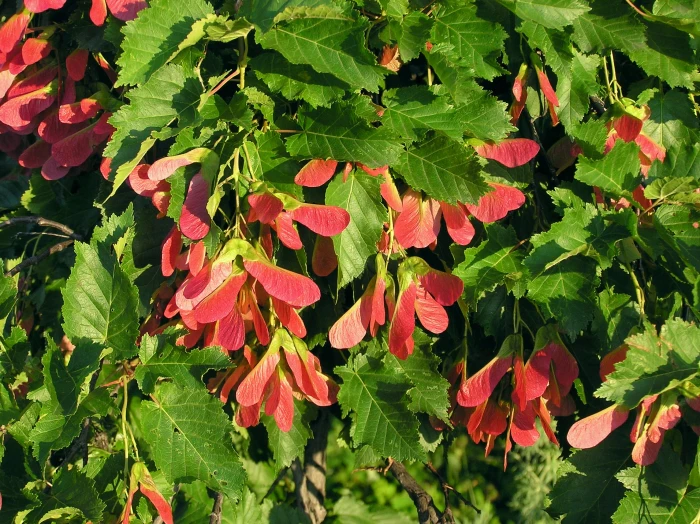Tatarian Maple
(Acer tataricum)
Tatarian Maple (Acer tataricum)
/
/

Le.Loup.Gris
CC BY-SA 3.0





















































































Estimated Native Range
Climate Requirements for Morgantown, West Virginia
| This Plant | Your Site | Plant Suitability for Your Location | ||
|---|---|---|---|---|
| • Precipitation | 5" - 122" | 42" | Aquatic | Aquatic |
| • High Temp. | 59°F - 96°F | 84°F | Your summer temperatures are normal for this plant. | Excellent |
| • Low Temp. | -28°F - 44°F | 21°F | Your winter temperatures are normal for this plant | Excellent |
Summary
Tatarian Maple is valued for its moderate size, which makes it suitable for smaller landscapes, and its adaptability to a range of soil types, including those with poor drainage. It thrives in full sun to part shade and requires moderate watering. This species is often used for ornamental purposes due to its attractive bark and fall color, which can include shades of yellow to reddish-orange. It can serve as a specimen plant, in borders, or as a street tree in urban environments. However, gardeners should be aware of its potential to become invasive outside its native range and should consult local guidelines before planting.CC BY-SA 4.0
Plant Description
- Plant Type: Shrub, Tree
- Height: 12-30 feet
- Width: 15-20 feet
- Growth Rate: Moderate
- Flower Color: N/A
- Flowering Season: Spring
- Leaf Retention: Deciduous
Growth Requirements
- Sun: Full Sun, Part Shade
- Water: Medium
- Drainage: Medium
Common Uses
Bee Garden, Bird Garden, Border Plant, Butterfly Garden, Deer Resistant, Drought Tolerant, Edible*Disclaimer: Easyscape's listed plant edibility is for informational use. Always verify the safety and proper identification of any plant before consumption., Fragrant, Low Maintenance, Potted Plant, Rock Garden, Street Planting
Natural Habitat
Forest edges, riverbanks, and open grasslands in Central and Eastern Europe and West Asia
Other Names
Common Names: Amur Maple , Tatar Maple , Tataarse Esdoorn , Tatarlönn
Scientific Names: Acer tataricum , Acer ginnala f. aidzuense , Acer ginnala var. aidzuense , Acer aidzuense , Acer tataricum var. torminaloides , Acer tataricum var. hebecarpum , Acer tataricum subsp. torminaloides , Acer tataricum f. acutipterum , Acer tataricum f. crispatum , Acer tataricum f. crispum
GBIF Accepted Name: Acer tataricum L.